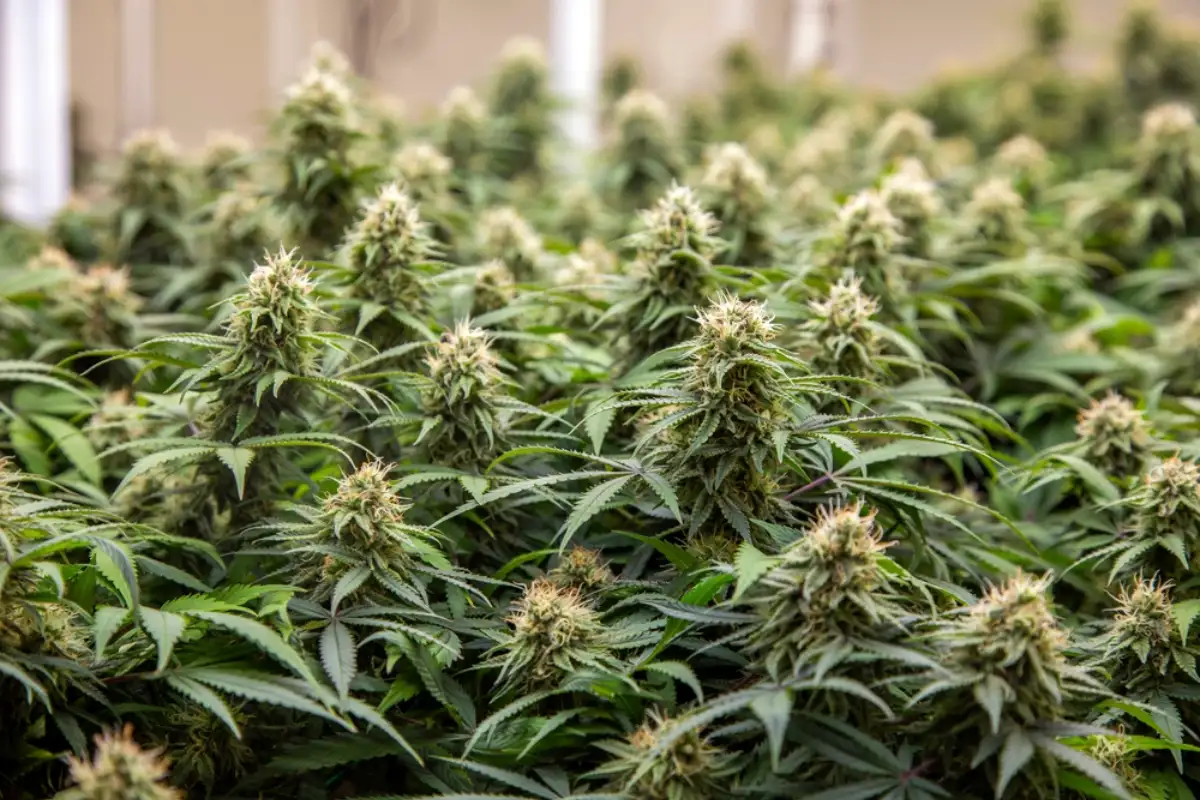Marijuana, also known as cannabis, has been a topic of much debate and controversy for decades. One of the questions that often arises in discussions about this plant is whether it should be classified as a narcotic. The term “narcotic” is often used to refer to drugs that have a potential for abuse and are associated with negative social and health consequences. In this blog post, we will delve into the topic and explore the various perspectives surrounding the classification of marijuana as a narcotic. By understanding the legal definitions, scientific classifications, and comparing it to other narcotics, we can gain a clearer understanding of where marijuana stands in the realm of drug classification. Furthermore, we will explore the current debates surrounding the topic and the potential impacts of any reclassification decisions. So, if you’ve ever wondered whether marijuana should be considered a narcotic, keep reading to discover the facts and insights that will help you form your own informed opinion.
Understanding Narcotics: Definition and Types
Narcotics are a class of drugs that are known for their ability to produce a sedative and pain-relieving effect. They act on the central nervous system, affecting the brain’s perception of pain and inducing a feeling of relaxation or euphoria. The term “narcotic” has been used in various contexts and can have different meanings depending on the legal, medical, and social perspectives.
Legal Definitions of Narcotics
In legal terms, the definition of narcotics can vary from one jurisdiction to another. Generally, narcotics are classified as controlled substances due to their potential for abuse and their harmful effects. The legal classification of narcotics typically falls under schedules or categories, which determine the level of control and penalties associated with their possession, sale, and use.
Types of Narcotics
Narcotics can be broadly categorized into three main types:
- Opioids: These narcotics are derived from opium or synthesized to mimic its effects. Examples include morphine, codeine, heroin, and synthetic opioids like fentanyl. Opioids are commonly used for pain management, but they also have a high potential for abuse and addiction.
- Depressants: Depressant narcotics, also known as sedatives or tranquilizers, slow down the central nervous system activity. Drugs like benzodiazepines (e.g., Valium, Xanax) and barbiturates fall into this category. They are primarily prescribed for anxiety and sleep disorders but can be misused for their sedative effects.
- Stimulants: While not traditionally associated with the term “narcotic,” certain stimulant drugs like cocaine and amphetamines can have similar legal and regulatory implications due to their potential for abuse and dependence. Stimulants increase alertness, energy, and focus but can also lead to addiction and adverse health effects.
Understanding the different types of narcotics is essential to discern the unique characteristics and risks associated with each category of drugs. It is within this understanding that we can explore the classification and potential inclusion of marijuana within the realm of narcotics.
What is Marijuana?
Marijuana, also known as cannabis, is a plant that is native to Central and South Asia. It has been used for various purposes for thousands of years, including medicinal, spiritual, and recreational use. Marijuana contains numerous chemical compounds known as cannabinoids, which are responsible for its psychoactive and therapeutic effects.
Understanding the Composition of Marijuana
Marijuana consists of various parts of the cannabis plant, including the leaves, flowers, stems, and seeds. The potency and effects of marijuana can vary depending on factors such as the strain, growing conditions, and preparation methods. The two primary cannabinoids found in marijuana are delta-9-tetrahydrocannabinol (THC) and cannabidiol (CBD). THC is the psychoactive compound responsible for the “high” sensation, while CBD is non-intoxicating and may have potential therapeutic benefits.
Effects of Marijuana on the Human Body
When marijuana is consumed, whether by smoking, vaporizing, or ingesting, the cannabinoids interact with the body’s endocannabinoid system. This system plays a crucial role in regulating various physiological processes such as mood, appetite, pain sensation, and immune response. The effects of marijuana can include relaxation, euphoria, altered perception of time, increased appetite, and potential therapeutic benefits such as pain relief and reduced nausea.
Medical Uses of Marijuana
Marijuana has a long history of medicinal use, with records dating back thousands of years. In recent years, there has been growing interest in the potential therapeutic applications of marijuana and its cannabinoids. Medical marijuana is now legally available in several countries and states, with prescribed use for conditions such as chronic pain, multiple sclerosis, epilepsy, and chemotherapy-induced nausea.
As research into marijuana continues to evolve, scientists are uncovering its potential benefits and risks. The understanding of marijuana’s composition, effects on the human body, and its medical applications are important factors to consider when discussing its classification as a narcotic.
Is Marijuana Classified as a Narcotic?
Marijuana’s classification as a narcotic has been a subject of debate and controversy for many years. The classification of drugs can vary depending on legal, scientific, and medical perspectives. In this section, we will explore the different dimensions of marijuana’s classification as a narcotic and delve into the various factors that influence its categorization.
Legal Definitions
The classification of marijuana as a narcotic varies across different legal jurisdictions. In some countries and states, marijuana is classified as a Schedule I drug, which means it is considered to have a high potential for abuse and no accepted medical use. This classification puts it in the same category as drugs like heroin and LSD. However, other jurisdictions have adopted different approaches, decriminalizing or legalizing marijuana for medical and/or recreational use.
Scientific Classifications
From a scientific perspective, the classification of marijuana as a narcotic is not universally agreed upon. While marijuana does have psychoactive properties, it differs significantly from other narcotics like opioids in terms of chemical composition and physiological effects. Some argue that the term “narcotic” should be reserved for drugs derived from opium or synthetic substances that mimic its effects, excluding marijuana from this classification.
Medical and Recreational Use
The medical and recreational use of marijuana further complicates its classification as a narcotic. In many countries and states, marijuana has been legalized for medical purposes due to its potential therapeutic benefits. This recognition of its medical value challenges the notion that marijuana should be classified in the same category as drugs with no accepted medical use. Additionally, the increasing legalization and regulation of marijuana for recreational use suggest a shift in societal attitudes towards its classification.
Understanding the legal definitions, scientific classifications, and the differentiation between medical and recreational use provides a foundation for assessing whether marijuana should be classified as a narcotic. In the following sections, we will explore the similarities and differences between marijuana and other narcotics to gain further insights into its classification.
Comparing Marijuana and Other Narcotics
When discussing the classification of marijuana as a narcotic, it is essential to compare and contrast its characteristics with other substances that are commonly categorized as narcotics. By examining the effects on the human body, addiction potential, and legal penalties associated with marijuana and other narcotics, we can gain a deeper understanding of its classification.
Effects on the Human Body
Marijuana, opioids, depressants, and stimulants have distinct effects on the human body. While marijuana is known for its psychoactive properties and can induce relaxation, euphoria, and altered perception, opioids act as pain relievers and can cause feelings of euphoria and sedation. Depressants, on the other hand, slow down the central nervous system and can create a sense of calm, relaxation, and drowsiness. Stimulants, as the name suggests, increase alertness, energy, and focus.
Addiction and Dependency
Addiction and dependency are significant concerns when discussing narcotics. The potential for addiction varies among different substances. Opioids, such as heroin, are highly addictive and can lead to physical and psychological dependence. Depressants, like benzodiazepines, can also be habit-forming and lead to dependence. Stimulants, such as cocaine and amphetamines, can be addictive due to their stimulating effects on the brain’s reward system.
In comparison, the addictive potential of marijuana is considered to be lower than that of opioids, depressants, and stimulants. While some individuals may develop a psychological dependence on marijuana, physical addiction is rare. However, it is crucial to note that individual responses to drugs can vary, and some individuals may develop problematic patterns of marijuana use.
Legal Penalties
The legal penalties associated with the possession, sale, and use of narcotics vary depending on the substance and jurisdiction. In many countries, the possession and distribution of narcotics like heroin and cocaine are heavily penalized, often resulting in lengthy prison sentences. The penalties for possessing and distributing marijuana vary widely across different jurisdictions, ranging from strict criminalization to complete legalization.
Understanding the similarities and differences between marijuana and other narcotics in terms of their effects, addiction potential, and legal penalties can provide valuable insights into the classification of marijuana. In the next section, we will explore the current debates surrounding the classification of marijuana and the arguments for and against its reclassification.
Current Debates Around Marijuana Classification
The classification of marijuana as a narcotic continues to be a topic of intense debate and discussion. There are differing opinions and arguments regarding whether marijuana should be reclassified or remain classified as a narcotic. In this section, we will explore the current debates surrounding marijuana classification and examine the arguments for and against its reclassification.
Arguments for Reclassification
- Medical Benefits: Advocates for the reclassification of marijuana argue that its medical benefits, particularly in pain management and symptom relief for various conditions, warrant a different classification. They highlight the growing body of research supporting its therapeutic potential and believe that classifying it as a narcotic hampers its accessibility for medical purposes.
- Public Health Approach: Some proponents argue that a public health approach should be taken towards marijuana, focusing on harm reduction and education rather than criminalization. They believe that treating marijuana as a narcotic perpetuates the stigma associated with its use and prevents individuals from seeking help and support when needed.
- Social Justice and Racial Disparities: The classification of marijuana as a narcotic is often criticized for its disproportionate impact on marginalized communities, particularly communities of color. Advocates argue that reclassifying marijuana could help address racial disparities in drug law enforcement and reduce the negative consequences faced by individuals who use marijuana recreationally or for medical purposes.
Arguments Against Reclassification
- Potential for Abuse: Opponents of reclassification argue that marijuana’s potential for abuse and dependence justifies its classification as a narcotic. They believe that loosening the regulations surrounding marijuana could lead to increased misuse, addiction, and associated health and social issues.
- Lack of Scientific Consensus: Some argue that there is still insufficient scientific evidence to support the reclassification of marijuana. They contend that more research is needed to fully understand its long-term effects, potential risks, and benefits before making any changes to its classification.
- International Drug Control Regulations: Critics of reclassification point to international drug control treaties, such as the United Nations’ Single Convention on Narcotic Drugs, which classify marijuana as a narcotic. They argue that altering the classification of marijuana could conflict with these treaty obligations and create legal and diplomatic challenges.
The debates surrounding marijuana classification are multifaceted and involve considerations of scientific evidence, societal impacts, public health, and global drug control policies. The outcome of these debates will shape the future of marijuana’s legal status and its classification as a narcotic.







